
Backtesting Forex: Transforming Your Trading Strategy to Success
Welcome, fellow explorer of the financial markets! The world of Forex trading, with its dynamic currency pairs and constant fluctuations, offers immense opportunity. However, navigating these volatile seas without a compass can be perilous. Every successful trader understands the need for a robust trading strategy – a set of rules dictating when to enter, exit, and manage a trade. But how do you know if your brilliant idea will actually work in the unpredictable real world? This is where the crucial concept of backtesting comes in.
In this comprehensive guide, we will delve deep into the essential practice of backtesting forex trading strategies. We’ll explore what it is, why it’s non-negotiable for anyone serious about trading, and walk through the processes and tools that can help you evaluate and refine your approach using historical data. By the end, you’ll have a clearer understanding of how backtesting can transform your trading from hopeful speculation into a more calculated endeavor.
Here are some key points regarding the importance of backtesting:
- Backtesting allows traders to validate their strategies based on historical performance.
- It provides valuable metrics to assess strategy effectiveness before risking real capital.
- Backtesting helps refine strategy parameters, leading to improved trading performance.
Whether you are a complete beginner just sketching out your first trading idea or an experienced trader looking to optimize an existing trading system, backtesting is a fundamental skill. It’s the closest you can get to seeing the future by meticulously analyzing the past. Let’s uncover the power hidden within historical price movements.
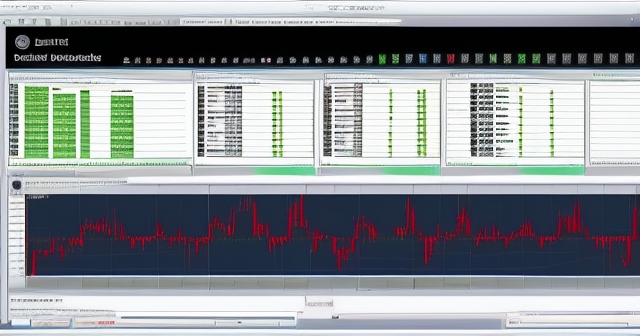
Before we can backtest a strategy, we must understand what drives the market movements our strategy seeks to exploit. In the Forex Market, asset prices primarily react to two main types of triggers: price action and news-driven triggers.
Price action refers to the raw movement of price over time, which forms patterns on charts that traders analyze. News-driven triggers, on the other hand, come from external events that impact market sentiment and fundamental valuations. These can be scheduled or unscheduled.
Scheduled economic events released by government agencies or reputable institutions are particularly potent drivers in the Forex market. Think about major announcements like interest rate decisions from central banks (like the Federal Open Market Committee – FOMC), unemployment figures, inflation data (like the Consumer Price Index), or manufacturing surveys (like Manufacturing PMI). These releases are often anticipated, but the actual numbers can significantly deviate from economists’ expectations.
It’s this deviation between the expected outcome and the actual announced figure that often sparks substantial volatility. A surprisingly strong jobs report, for example, might cause a currency to rally sharply, while a weaker-than-expected inflation number could lead to a sell-off. Traders specializing in news trading build strategies specifically around anticipating and reacting to these deviations.
Understanding these triggers is vital because your trading strategy will likely be designed to react to one or both. A technical strategy might trade based purely on price action patterns, while a fundamental strategy will focus on these news events. Effective backtesting needs to consider how your strategy would have performed under conditions created by these historical triggers.
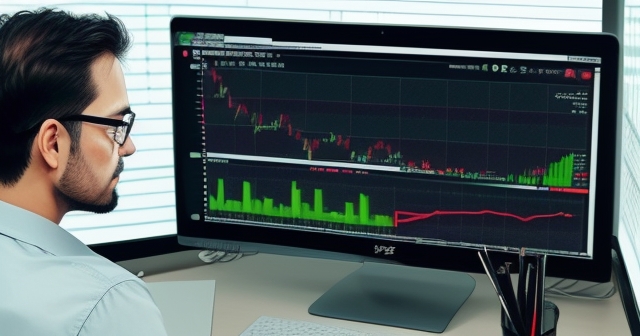
For traders who incorporate fundamental analysis or news trading into their strategies, the economic calendar is an indispensable tool. It lists scheduled economic events for various countries, detailing the event name, the time of release, the previous data point, the market consensus (expected value), and where available, the actual released value.
Events on the economic calendar are often categorized by their potential market impact – typically low, medium, or high. High-impact events, often referred to as Tier 3 events, are those most likely to cause significant price swings and increased volatility in relevant currency pairs.
How do traders use this? By comparing the ‘Actual’ data to the ‘Expected’ data listed on the calendar. A large difference – a significant deviation – often indicates a major surprise to the market. This surprise is what can trigger rapid and substantial price movements. For example, if the market widely expects the unemployment rate to remain unchanged, but the actual release shows a sharp decrease, this positive surprise for the economy can strengthen the associated currency.
When you are backtesting a strategy, especially one sensitive to fundamental factors or volatility, you need to know how your strategy would have fared during these key historical moments. Did your entry signals fire before or after the major move? Did your stop loss protect you during the volatility spike? Integrating historical economic calendar data into your backtesting, whether manually or through sophisticated software, provides a much richer and more realistic assessment of your strategy’s performance under specific, news-driven conditions.
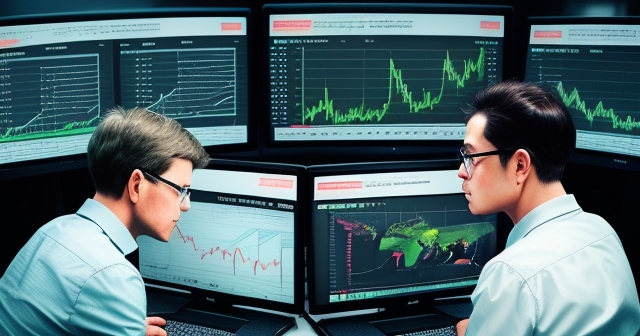
At its heart, backtesting is the process of taking your trading strategy and applying its rules to past market data to see how it would have performed. It’s essentially simulating historical trades based on your predefined conditions. Imagine winding the clock back on a chart and applying your entry, exit, and trade management rules candle by candle, bar by bar, just as you would in live trading.
The core purpose of backtesting is multifaceted and absolutely critical for any serious trader:
-
Strategy Validation: Does the strategy make sense based on how the market has historically moved? Does it generate profitable signals more often than losing ones?
-
Performance Measurement: Backtesting allows you to calculate key metrics like hypothetical net profit, win rate, average profit per trade, maximum drawdown, and other statistical measures over a defined historical period.
-
Identifying Strengths and Weaknesses: By reviewing historical trades generated by the backtest, you can see which types of market conditions or currency pairs the strategy performs best in, and where it struggles.
-
Refining Strategy Parameters: You can test different parameters within your strategy (e.g., slightly adjust the lookback period for a moving average, change your stop loss distance) to see if performance improves.
-
Building Confidence: Seeing evidence that your strategy has historically generated positive results (even hypothetically) can build the psychological confidence needed to execute trades without hesitation in a live market.
-
Risk Reduction: By identifying potential flaws and assessing historical drawdown before risking real capital, backtesting is a fundamental step in risk management.
Think of backtesting as a critical testing phase. You wouldn’t launch a new product or build a bridge without extensive testing, would you? Similarly, you shouldn’t deploy a trading strategy with real money until you’ve thoroughly tested its historical viability. It’s a hypothetical simulation, but it uses real historical data from the market you intend to trade.
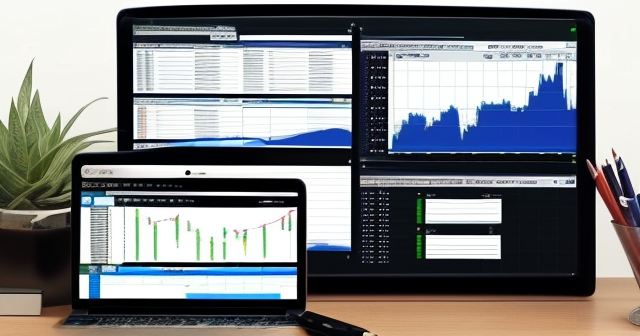
Trading in the Forex market is inherently risky, especially when using margin. The possibility of significant losses is always present. Backtesting serves as a vital tool to mitigate this risk and prepare you for the realities of live trading. Here’s why it’s non-negotiable:
-
It’s Risk-Free: Backtesting uses hypothetical capital and historical data. You make mistakes, learn lessons, and refine your strategy without losing a single cent of real money.
-
Accelerated Learning: You can test years or even decades of historical data in a relatively short period, experiencing a wide range of market conditions (trends, ranges, high volatility, low volatility) that might take years to encounter in real-time trading.
-
Objective Performance Evaluation: Instead of relying on gut feelings or subjective observations, backtesting provides concrete statistical data on how your strategy performed historically. Metrics like win rate, profit factor, and maximum drawdown give you an objective look at its potential.
-
Defines Entry and Exit Points: A backtest forces you to clearly define your entry points and exit points (including stop loss and take profit levels) based on precise rules, removing ambiguity and emotional decision-making during live trading.
-
Refines Risk Management: By seeing how your strategy performed during periods of drawdown or multiple consecutive losses, you can refine your position sizing and risk management rules to protect your capital more effectively.
-
Psychological Preparation: Successfully backtesting a strategy can build the confidence needed to stick to your trading plan during inevitable drawdowns or losing streaks in live trading. You know, statistically, the strategy has a historical edge if executed consistently.
Without backtesting, a trading strategy is merely a hypothesis. Backtesting provides the empirical evidence (from the past) that converts that hypothesis into a potential working model. It is the essential bridge between developing an idea and confidently executing it in the live market.
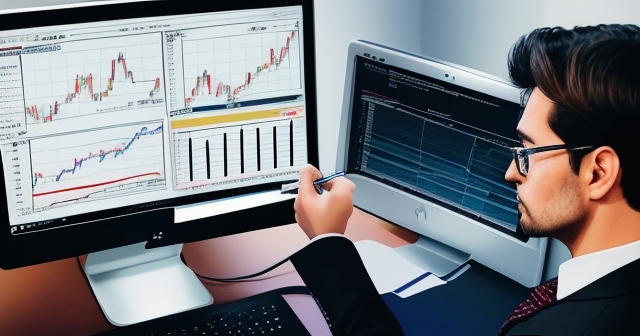
One of the foundational methods for testing a trading strategy is manual backtesting. This method involves going back through historical charts, typically on a trading platform or charting software, and manually simulating trades based on your strategy’s rules, one bar or candle at a time.
Here’s a simplified look at the process:
-
Select Your Market and Timeframe: Choose the specific currency pair (e.g., EUR/USD) and timeframe (e.g., 1-hour, 4-hour, Daily) you want to test.
-
Go Back in Time: Scroll the chart back to a specific historical date from which you want to start your backtest. Ensure you have sufficient historical data available.
-
Conceal Future Data (Optional but Recommended): Ideally, you’d use a tool that hides the bars to the right of your current position to prevent subconscious bias. Some platforms like FX Replay offer a dedicated “Replay mode” for this.
-
Simulate Price Movement: Slowly advance the chart bar by bar (or candle by candle).
-
Identify Strategy Signals: As you advance, look for setups that meet your strategy’s exact entry criteria.
-
Execute and Manage (Hypothetically): If a signal occurs, record the hypothetical trade details: entry price, date/time, position size (based on your risk rules), and initial stop loss and take profit levels.
-
Track Trade Progression: Continue advancing the chart. See if price hits your stop loss (a loss), your take profit (a win), or if your exit rules trigger before either.
-
Record Outcomes: Meticulously record the outcome of each trade (win/loss, profit/loss in pips or currency, duration). Use a spreadsheet or dedicated backtesting journal.
-
Repeat: Continue this process over a significant historical period.
-
Analyze Results: Calculate total profit/loss, win rate, drawdown, etc., from your recorded trades.
Manual backtesting is time-consuming and can be tedious, but it offers a deep understanding of price action and how your strategy interacts with the market structure. It forces you to look closely at every trade setup and outcome, building intuition and chart reading skills that automated tools might not foster as effectively.
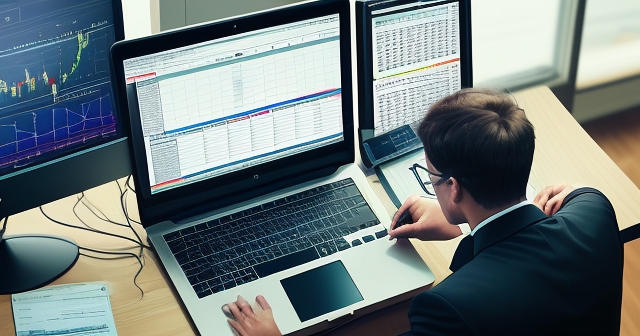
For traders who want to test strategies over vast periods of historical data quickly or analyze numerous variations of parameters, automated backtesting is the preferred method. This involves using software or algorithms (often called Expert Advisors or EAs in the MetaTrader platforms) to apply your strategy’s rules to historical data sets automatically.
The software essentially sifts through the historical data, identifies every instance where your strategy’s entry criteria were met, simulates the trade according to your defined exit and management rules, and compiles a statistical report of the results.
Popular platforms like MetaTrader 4 (MT4) and MetaTrader 5 come with built-in Strategy Tester tools. If your strategy can be coded into an Expert Advisor (EA) using the MQL programming language, you can use the Strategy Tester to run backtests. MT4 offers different modeling methods for its backtester, with the ‘Every Tick’ model generally providing the most accurate simulation by attempting to reconstruct price movements within each bar, whereas ‘Control Points’ or ‘Open Prices Only’ are faster but less precise.
Beyond platform-specific tools, dedicated backtesting software exists, offering more advanced features, better data quality, and often a more user-friendly interface for setting up tests without needing to code. Some platforms allow you to build strategies visually or using simple language. For example, tools like Capitalise.ai enable users to automate strategies using natural language, while platforms like FX Replay offer robust manual and semi-automated backtesting environments with features like multi-pair testing, high-quality data feeds, and detailed performance analytics.
The advantage of automated backtesting is speed and objectivity. It can process years of data in minutes and removes human bias or errors during the simulation. However, its accuracy depends heavily on the quality of the historical data used and the fidelity of the strategy’s coding or implementation in the software. You need to ensure the software correctly interprets your strategy’s rules.
Here’s a comparison between manual and automated backtesting:
| Criteria | Manual Backtesting | Automated Backtesting |
|---|---|---|
| Speed | Slow, takes longer to test | Fast, processes data quickly |
| Data Interaction | Hands-on with price movements | Automated entry based on coded rules |
| Bias Risk | Higher potential for bias | Less bias, more objective |
| Learning Experience | Builds intuition | Focuses on data-driven results |
Choosing the right tool for backtesting significantly impacts the efficiency and accuracy of your testing process. The landscape offers various options, from integrated platform features to dedicated software.
Many traders start with the built-in Strategy Tester found in platforms like MT4 or MT5. This tool is convenient if you already use MetaTrader, and if your strategy is coded as an Expert Advisor. It allows you to test EAs on historical data and provides standard performance reports. While the MT4 Strategy Tester is powerful, especially with quality historical data and the ‘Every Tick’ model, coding can be a barrier for some, and analyzing the visual execution of trades can be less intuitive than manual charting or dedicated visual backtesters.
Platforms like Capitalise.ai represent a different approach, focusing on no-code automation and backtesting. They allow you to define your trading strategy rules using simple, plain English sentences, which the platform then interprets and can use for backtesting or even live automation. This significantly lowers the technical barrier for traders who aren’t programmers but want the benefits of automated testing.
Dedicated backtesting software, such as FX Replay, often provides a more tailored experience. These platforms specialize specifically in backtesting and simulation. They might offer features like high-quality, tick-level historical data, the ability to backtest multiple currency pairs or timeframes simultaneously (Multipair & Multichart), advanced visual review modes, and detailed, customizable performance analytics beyond what basic platform testers provide. Features like a ‘Go-To’ function to jump to specific dates or a ‘Performance calendar’ to review results day-by-day enhance the analysis process.
When selecting a tool, consider your strategy’s complexity, your technical skills (coding ability), the importance of data quality for your strategy, and the level of detail you need in your performance analysis. Some tools are better suited for manual, visual testing (like FX Replay’s Replay mode), while others excel at rapid, automated statistical analysis (like MT4 Strategy Tester with a well-coded EA or Capitalise.ai).
If you’re exploring different brokers and platforms for your Forex trading journey, it’s worth considering what backtesting tools are available. Some brokers, like Moneta Markets, offer access to popular platforms like MT4 and MT5, which come equipped with their own backtesting functionalities. Evaluating the platform options a broker provides can be part of your overall decision-making process.
While the general principles of backtesting apply across various markets, the Forex Market has unique characteristics that require specific consideration during backtesting.
-
The 24/7 Nature: The Forex market trades around the clock from Monday to Friday. However, your strategy might be designed to trade only specific sessions (e.g., London session or New York session) when volatility for your chosen currency pairs is typically higher. When backtesting, you must ensure your simulation is applied only to the hours you intend to trade. Backtesting a strategy designed for the London open across the entire 24-hour period will yield misleading results.
-
Margin and Leverage: Forex trading is heavily reliant on margin, which is effectively borrowed capital from your broker that allows you to control larger positions with a smaller amount of your own money. While backtesting results are typically shown in pips or a hypothetical currency value based on a fixed position size or risk per trade, the impact of margin is felt in your required capital and potential returns on equity. Be mindful that varying margin requirements across different brokers can affect your overall capital efficiency and thus your percentage return on actual capital. Your backtest should account for realistic position size based on your intended risk per trade and account size.
-
Brokerage Costs: Spreads and commissions are real costs in Forex trading that reduce your net profit. Automated backtesting software often allows you to factor in typical spreads and commissions to get a more accurate simulation of the net return after costs. Manual backtesting requires you to manually subtract these costs from hypothetical profits.
-
Integrating Economic News: As discussed, economic events cause significant volatility. For strategies that react to news, your backtesting tool or process must be able to account for specific times of news releases and how price reacted immediately following them. High-quality tick data is essential for accurately backtesting strategies sensitive to rapid, post-news price movements.
-
Weekend Gaps: Although Forex trades 24/5, there can be price gaps between the Friday close and the Sunday open due to weekend news or events. While less frequent than gaps in stock markets, these can occur and affect strategies holding positions over the weekend. Ensure your data and testing method can handle these potential gaps if your strategy allows weekend holds.
Accounting for these Forex-specific elements makes your backtest results more realistic and better prepares you for the conditions you will encounter in the live market. Ignore them, and your backtest might show impressive results that evaporate quickly when faced with real-world Forex dynamics.
Running a backtest is only the first step; the real value comes from analyzing the results. Automated backtesting software typically generates a detailed report with various statistics. Understanding these metrics is crucial for evaluating your strategy’s historical viability.
Here are some key performance metrics you should examine:
-
Net Profit (or Loss): The total hypothetical profit generated over the backtesting period, minus total losses and costs (spreads/commissions).
-
Total Trades: The total number of trades executed during the backtest. A sufficient number of trades is needed for the statistics to be meaningful (aim for at least 30-50, preferably hundreds or thousands).
-
Gross Profit/Loss: The sum of all winning trades and the sum of all losing trades before costs.
-
Win Rate (%): The percentage of trades that were profitable. Calculated as (Number of Winning Trades / Total Trades) * 100.
-
Loss Rate (%): The percentage of trades that were losing. (Number of Losing Trades / Total Trades) * 100.
-
Average Win: The average profit from all winning trades.
-
Average Loss: The average loss from all losing trades. Comparing Average Win to Average Loss is important – a strategy can be profitable even with a low win rate if the average win is significantly larger than the average loss.
-
Maximum Drawdown: The largest peak-to-trough decline in your hypothetical account balance during the backtesting period. This is a critical measure of risk and capital preservation. A high drawdown indicates a potentially fragile strategy or poor risk management.
-
Profit Factor: Calculated as (Gross Profit / Gross Loss). A Profit Factor greater than 1 indicates a profitable strategy over the test period. A factor of 2 means the strategy made twice as much in gross profits as it lost in gross losses.
-
Consecutive Wins/Losses: The highest number of winning or losing trades in a row. Knowing the maximum consecutive losses helps you prepare psychologically and size positions appropriately to survive inevitable losing streaks.
-
Sharpe Ratio (Advanced): A measure of risk-adjusted return. It helps you compare different strategies by assessing how much return they generated for the amount of risk taken.
Don’t focus on just one metric. A high win rate might be misleading if the average loss is much larger than the average win. A high net profit might come with an unacceptable maximum drawdown. Look for a balance of profitability, consistency (win rate, average trade), and risk management (maximum drawdown, profit factor).
Backtesting is often confused with paper trading (also known as forward testing or simulated trading). While both are crucial steps in validating a trading strategy without risking real capital, they serve different purposes and have distinct advantages.
Backtesting:
-
Uses historical data.
-
Fast: Allows you to test a strategy over long periods (months or years) in minutes or hours.
-
Ideal for identifying if a strategy had a historical edge and refining its core rules and parameters.
-
Doesn’t account for real-time factors like live spread fluctuations, slippage (the difference between the expected and actual execution price), or the psychological pressure of a live market.
-
Based on static past data.
Paper Trading (Forward Testing):
-
Uses a demo account and trades in the live market environment.
-
Slow: Requires you to trade in real-time over days, weeks, or months to get a statistically significant sample of trades.
-
Ideal for testing how a strategy performs under current market conditions, experiencing live spread and slippage, and practicing execution under realistic conditions.
-
Exposes you to the real-time dynamics of the market but without the emotional impact of risking real money.
-
Reflects dynamic, changing market conditions.
Think of backtesting as the research and development phase, where you iterate and optimize based on historical performance. Paper trading is the quality assurance phase, testing the refined strategy in the current operational environment before full deployment. Both steps are vital. A strategy that performs well in backtesting should then be subjected to a period of paper trading to confirm its robustness in the live market before you commit real funds.
Successfully backtesting and paper trading a strategy provides a strong foundation, but the transition to live trading with real capital is a significant step. It introduces psychological factors and real-world execution variables that aren’t fully replicated in simulations.
Remember that backtesting results are not a guarantee of future performance. The market is dynamic. Conditions change, volatility levels shift, and unforeseen events (Black Swans) can occur that were not present in your historical data. Your backtest shows what *would* have happened, not what *will* happen.
When moving to live trading, start small. Use a fraction of the capital you eventually intend to trade with, or begin with micro lots. This allows you to experience the emotional impact of winning and losing real money without exposing yourself to excessive risk. Maintain rigorous record-keeping of your live trades to compare their performance against your backtest and paper trading results. Are there significant discrepancies? If so, you need to investigate why – is it execution issues (slippage, spread), or have market conditions fundamentally changed?
Stick strictly to the strategy and risk management rules you defined and validated during backtesting and paper trading. Emotions like fear and greed are powerful in live trading and can derail even the most statistically sound strategy if you abandon your rules.
Finally, always trade with regulated brokers that offer reliable platforms and execution. The best backtest means little if your live trading is hampered by technical issues or unfavorable trading conditions. As you look for a broker to take your backtested strategy live, consider platforms that offer the tools you need and have strong regulatory oversight. If you’re considering platforms for real Forex trading, Moneta Markets is a broker known for providing access to major platforms like MT4, MT5, and Pro Trader, alongside features like low spreads and multiple regulatory licenses (FSCA, ASIC, FSA), which can provide an added layer of confidence as you move from simulation to live markets.
While backtesting is an indispensable tool, it’s crucial to be aware of its limitations and the inherent risks involved in trading, even with a backtested strategy.
Backtesting Limitations:
-
Past Performance is Not Indicative of Future Results: This is the most significant limitation. Market conditions evolve, new regulations emerge, and economic landscapes change. A strategy that performed perfectly in the past might fail in the future.
-
Data Quality Issues: The accuracy of your backtest is directly tied to the quality of your historical data. Poor quality data, missing bars, or inaccurate price feeds will lead to misleading results.
-
Execution Slippage and Spread: Backtests often use fixed spreads or average spreads. In reality, spreads can widen significantly during volatile periods or news events, impacting your actual entry and exit prices and reducing profitability. Slippage can also occur, where your order is filled at a different price than intended.
-
Over-Optimization (Curve Fitting): It’s possible to tweak a strategy’s parameters until it performs exceptionally well on a specific historical data set, but performs poorly on any other data. This is called curve fitting, and it makes the strategy fragile and unlikely to work in the future. Good backtesting seeks parameters that are robust across different historical periods, not just optimized for one.
-
Missing Unexpected Events: Historical data might not include ‘Black Swan’ events – rare, unpredictable occurrences with massive market impact. Your backtest won’t prepare you for every possible unforeseen event.
-
Ignoring Real-World Costs and Broker Rules: Some basic backtests might not fully account for rollovers (swap costs), withdrawal fees, or specific broker margin call policies.
Trading Risks:
-
Trading foreign exchange on margin carries a high level of risk and may not be suitable for all investors. The leverage offered can amplify both profits and losses.
-
You could lose some or all of your initial investment.
-
Increased leverage can result in significant losses that exceed your initial deposit.
-
Market commentary, research, or tools provided by brokers or third parties should not be relied upon as investment advice. You should consider your investment objectives, level of experience, and risk appetite before trading.
-
Always seek advice from an independent financial advisor if you have doubts.
Backtesting provides a statistical edge based on historical performance, but it removes the human element and doesn’t guarantee future success. It’s a vital piece of the puzzle, but it must be combined with rigorous risk management, continuous learning, and disciplined execution in the live market.
Table of Contents
Togglebacktesting forexFAQ
Q:What is backtesting in forex trading?
A:Backtesting is the process of applying a trading strategy to historical market data to evaluate its performance and effectiveness.
Q:Why is backtesting important for traders?
A:Backtesting helps traders validate their strategies, identify potential weaknesses, and build confidence before risking real capital.
Q:Can backtesting guarantee future profits?
A:No, past performance is not indicative of future results. Backtesting helps analyze historical data, but market conditions can change unpredictably.
You may also like
Calendar
| 一 | 二 | 三 | 四 | 五 | 六 | 日 |
|---|---|---|---|---|---|---|
| 1 | 2 | 3 | 4 | 5 | 6 | 7 |
| 8 | 9 | 10 | 11 | 12 | 13 | 14 |
| 15 | 16 | 17 | 18 | 19 | 20 | 21 |
| 22 | 23 | 24 | 25 | 26 | 27 | 28 |
| 29 | 30 | 31 | ||||
發佈留言
很抱歉,必須登入網站才能發佈留言。